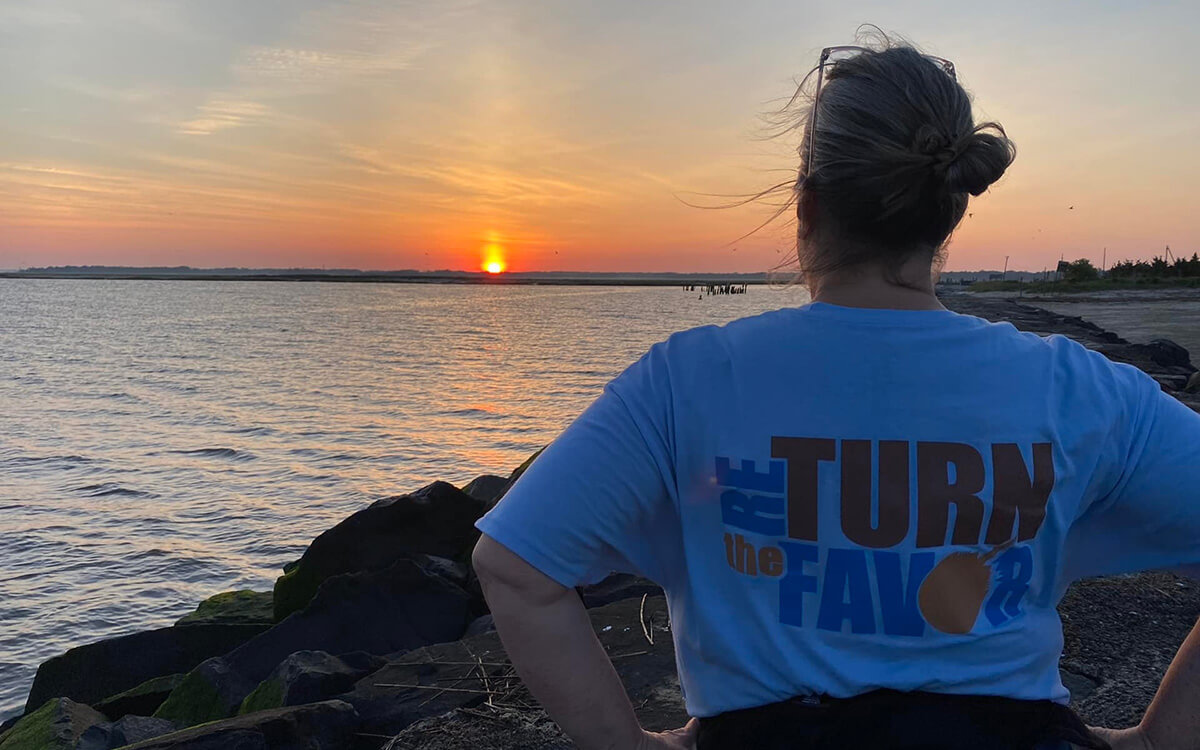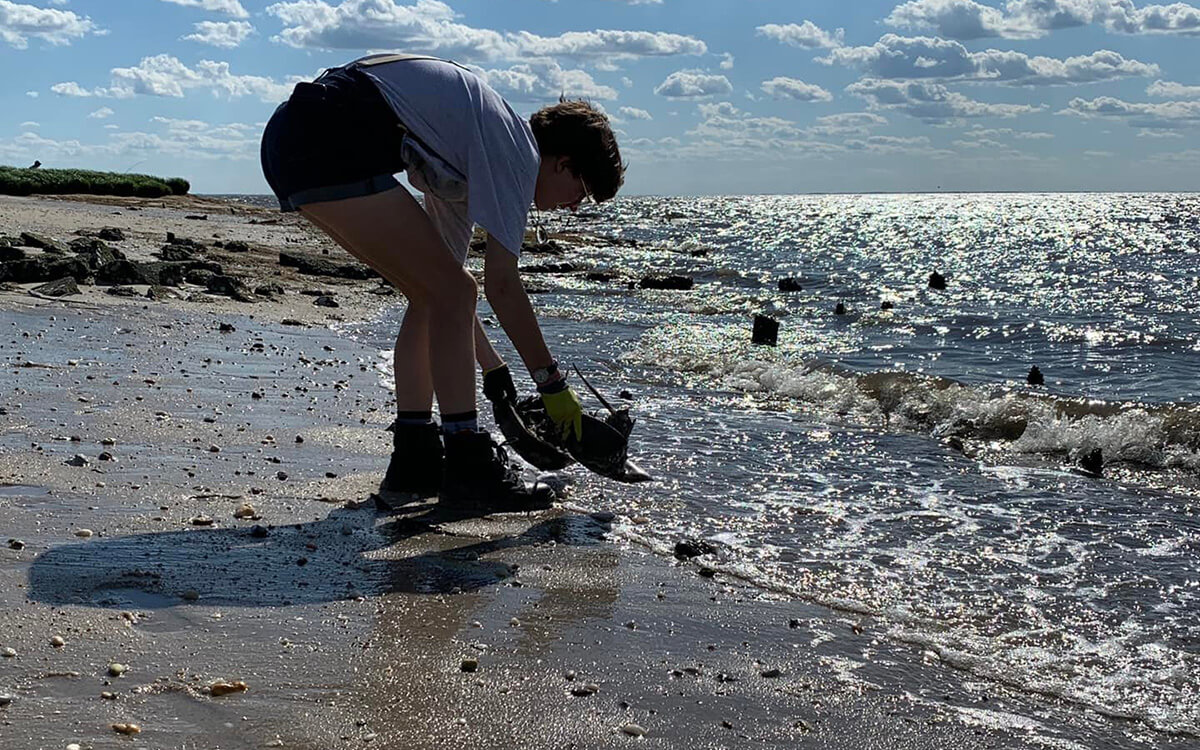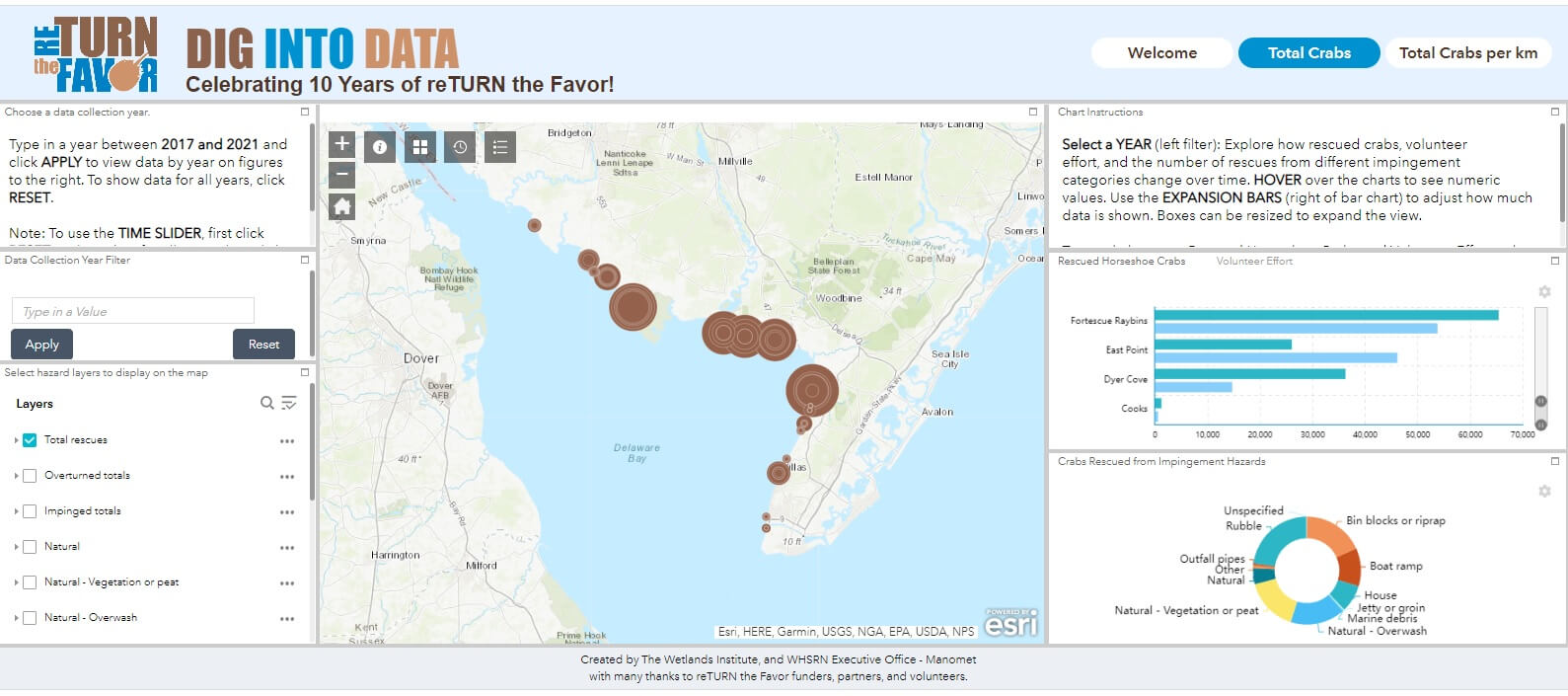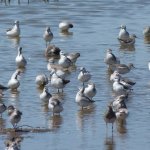By: Laura Chamberlin, reTURN the Favor Coordinator for WHSRN Executive Office
This spring, reTURN the Favor celebrated ten years of horseshoe crab rescue on New Jersey’s Delaware Bay beaches. Led by 11 partner organizations and individuals, hundreds of reTURN the Favor volunteers have returned over 930,000 horseshoe crabs to the bay after they were stranded upside down on beaches or trapped in debris during spawning.
During a typical spawning season, an estimated 10 percent of the spawning horseshoe crab population will end up stranded. When their soft undersides and gills are exposed to the sun, horseshoe crabs are vulnerable to dehydration and predation. Climate-related impacts such as sea level rise also threaten crabs’ population numbers — beach erosion and crumbling infrastructure across the bay can lead to even more strandings in the rubble left behind. Horseshoe crabs also face harvesting by the fishing and biomedical industries, creating a detrimental impact to the Delaware Bay population — New Jersey now has a complete moratorium against harvest for non-biomedical uses.


Left: Taking a break from rescuing to savor the sunset. Photo courtesy of April Kunz-Oleksy. Right: Giving a overturned horseshoe crab closer to the water. Photo courtesy of Tilia Baratta.
Since 2013, the reTURN the Favor program has helped drastically reduce mortality from strandings and increased awareness of horseshoe crab conservation. Volunteers rescued 5,000 crabs along eight New Jersey beaches during the program’s first year. Over the last nine years, program participants have completed 4,860 rescue walks, with the number of walks increasing each year. ReTURN the Favor completed its tenth season on July 15, 2022, rescuing nearly 100,000 crabs.
Program coordinators developed an interactive map of data from the last five years so that decision-makers, biologists, and horseshoe crab enthusiasts can explore key hazards and beaches to prioritize restoration projects. Map users can also track the program over time and see the impact of volunteers’ efforts. Data is shared both as total crabs rescued at a beach and as total crabs rescued per kilometer, to account for varying lengths of beaches.

Image of the interactive data visualization map.
For more information, contact Laura Chamberlin, the WHSRN Executive Office’s reTURN the Favor coordinator, at rtf@manomet.org.
Program partners include The Wetlands Institute, Executive Office of Western Hemisphere Shorebird Reserve Network (WHSRN) – Manomet, Conserve Wildlife Foundation of New Jersey, Citizens United for the Maurice River, Friends of Cape May National Wildlife Refuge, The Nature Conservancy, New Jersey Audubon Society, and New Jersey Division of Fish and Wildlife, and many dedicated volunteers. The program is currently supported by Ocean Wind – An Orsted and PSEG project and the Marshall Reynolds Foundation.
Cover Photo: Horseshoe crabs spawning on New Jersey beach at Delaware Bay. Photo: Laura Chamberlin.






